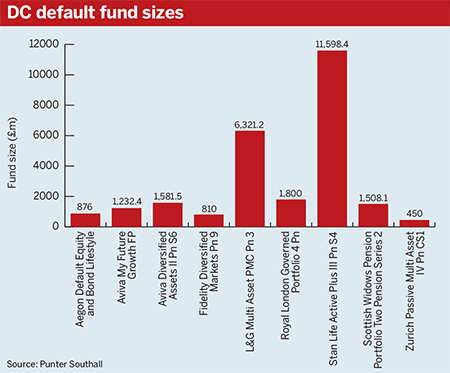More than 90 per cent of savers enrolled in a pension choose to remain in the default option, making it imperative that its investments match members’ needs and offer value for money.
As more than 9m workers are now enrolled in a pension through auto-enrolment, mastertrust providers perform a vital function in securing the nation’s future in retirement.
My concern is around the government driving the cap down even further
Richard Butcher, PTL
A growing membership, now armed with freedom and choice, will need to be understood and catered for. Providers are constrained by a cap on charges. Despite recent wobbles, for now we remain in a longstanding bull market that is raising the need to look for alternative sources of return.
Get to know your membership
Membership demands and demographics sit at the centre of default fund thinking. Strategic flexibility is key to ensuring younger members see sufficient asset growth while older members are moved into fixed income.
In the view of Maria Nazarova-Doyle, head of DC investment consulting at JLT Employee Benefits, getting to grips with your membership is essential to building an optimal investment strategy for your default fund.
“Whoever is responsible for defaults, they have to continuously monitor the membership and they need [data on] scheme demographics to understand how they are changing,” she says.
“For example, if you have an annuity target in default, but the majority of your members are taking cash, there’s obviously a clear mismatch… you need to make sure that the investment strategy that you put in place actually supports members,” she adds.
Consider freedom and choice
Freedom and choice has its virtues for members, but poses a further challenge to default fund architects. Providers have needed time to understand how their members would react to their new pension freedoms.
Jayna Gandhi, investment consultant at Quantum Advisory, identifies flexibility as key to accommodating freedoms in a default fund.
“I think pension freedoms are a big thing,” she says. “There’s likely to be more flexibility in the actual asset allocation, so rather than seeing a traditional 75 per cent annuity-matching-type fund and a 25 per cent cash holding, you might see something invested across a number of different assets.”
According to Gandhi, a DC default fund designed with freedoms in mind would look “more like an income drawdown solution, but it’s based for that flexibility, so if members do change their minds they have a broad-based solution that hasn’t forced them one way”.
Look for new sources of returns
Default fund providers are coming to a better understanding of their members’ needs, and have moved into a position where they can exploit a range of investment options in order to meet these demands.
Default fund providers might need to start investing in more niche or active strategies as they face the challenge of maintaining returns in an increasingly expensive market for conventional assets.
In a November note, Goldman Sachs International strategists wrote: “It has seldom been the case that equities, bonds and credit have been similarly expensive at the same time, only in the ‘Roaring ’20s’ and the ‘Golden ’50s’.”
Damon Hopkins, associate director at consultancy P-Solve, says not enough thinking has been done on how providers can continue to maximise growth and risk-mitigation opportunities throughout the various phases of the default strategy.

“Returns have been quite easy to come by in the past, particularly equity returns,” Hopkins says. “When developed market equities have fallen, you can go into emerging market equities, and you can kind of rotate things on a geographic basis.”
But this environment is unlikely to last forever. “What’s going to be a significant challenge is getting the level of return that perhaps equities have produced in the past that we potentially think will be more difficult to come by in the future,” he says.
Don’t forget the charge cap
Members’ assets in a default fund must not be subject to charges in excess of a cap. If charges are calculated solely as a simple percentage of members’ funds, the annual charge limit is currently 0.75 per cent.
DC provision: Ensuring good member outcomes
Mark Rowlands, director of customer engagement at mastertrust Nest, and Rosemary Lemon, group head of reward at global professional recruiting group Hays, discuss what pension providers and employers can do to ensure good value for members.
Richard Butcher, managing director of professional trustee company PTL, sees the cap as one of the biggest challenges for default fund providers, but thinks that they have generally learnt to live within the charge cap.
“My concern is around [the government] driving the cap down even further,” he says. “I know of at least one very large fund that had spent a lot of time and effort developing what they thought was a really, really good default, but they had to scrap it because they couldn’t deliver it within the charge cap.
The fact the cap is driving funds out of the market “may be a good outcome”, says Butcher, but “it may also be a poor outcome”.














